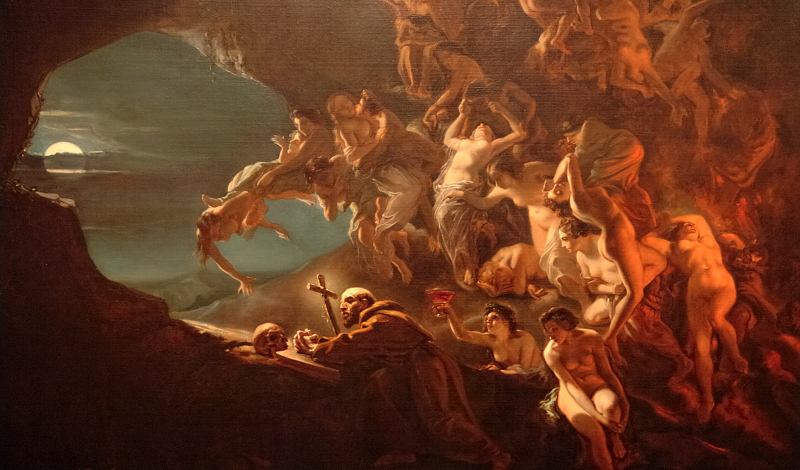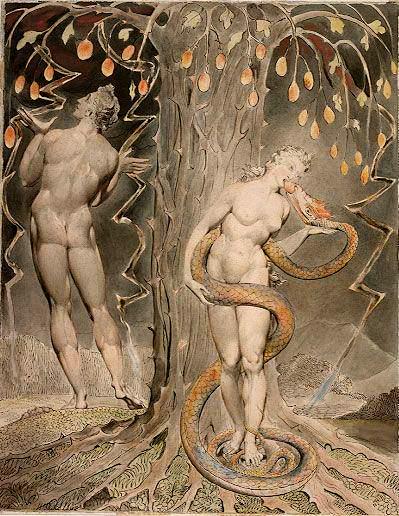Temptation
I was doing some research on the theme of temptation in art, and came upon some very interesting historical practices that resulted. There were people who took up an anchoritic life – a life seperated as much as possible from the temporal world. You can’t make this stuff up:
The anchoritic life became widespread during the early and high Middle Ages. Examples of the dwellings of anchorites and anchoresses survive. They tended to be a simple cell (also called “anchorhold”), built against one of the walls of the local village church. Once the inhabitant had taken up residence, the bishop permanently bricked up the door in a special ceremony.
http://en.wikipedia.org/wiki/Anchorite
One of the reasons the hermitic and monastic traditions were popular in mideval european culture was the existance of a written tale of the life of St. Anthony the Great (a 3rd century Egyptian Christian) that had been translated into latin and perputuated.
http://en.wikipedia.org/wiki/Anthony_the_Great
Alltogether it makes for very interesting reading….
Posted in Uncategorized and tagged historical inspiration by Adam A. Thompson with no comments yet.
Flute of Dancing
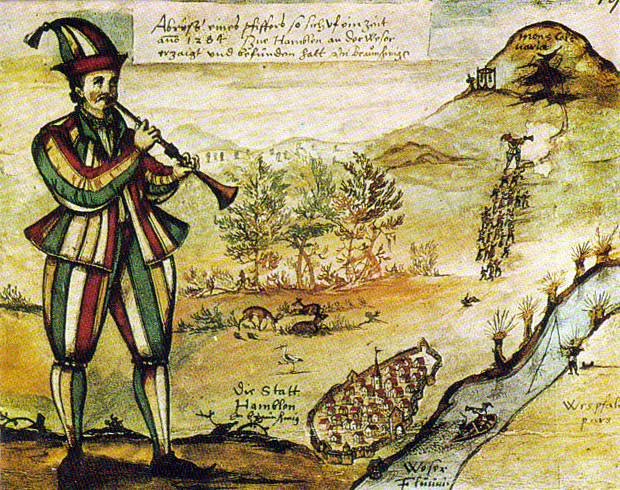 Inspired by a recent history of heresy in medieval times, and Richard Wunderli’s telling of the story of the Drummer of Niklashausen, Hans Behem, here is a magic item that should please fans of the Pied Piper of Hamlin.
Inspired by a recent history of heresy in medieval times, and Richard Wunderli’s telling of the story of the Drummer of Niklashausen, Hans Behem, here is a magic item that should please fans of the Pied Piper of Hamlin.
This flute appears to be a normal, oversized flute. When played by a person who succeeds on a DC 15 Perform (wind instruments) check, the flute creates an hypnotic rhythm of a tune. Those within 30 feet who fail DC 20 Will saves are forced to dance for 2d6 rounds. Those affected can still attack, but at a -4. They also receive a +2 bonus to AC while dancing.
Flutes of dancing can be sounded with this effect twice a day.
Faint enchantment; CL 4th; Craft Wondrous Item, scare; Price 5,000 gp; Weight 1 lb.
Posted in Magic Item and tagged enchantment, instrument by Stephen Hilderbrand with no comments yet.
Thrall of Graz’zt
Arcane Paragon Path
Prerequisite: Evil alignment, Arcane Power Source.
By engaging in a vile rite known as the Hollow Feast, those with a lust for power and a penchant for depravity and betrayal attract the attention of agents of Graz’zt and enter into foul pacts. Traded secrets of power and given demonic servents these fallen souls carry out the creed of the Dark Prince – seduce and betray.
Path Features
Spell Betrayal (11th level) – Once a round, when you hit a target with an arcane power against whom you have combat advantage you deal an extra 1d8 damage.
Dark Charisma (11th level) – You gain a +2 vile bonus on Diplomacy and Bluff checks against evil creatures. This bonus increases to +4 at 21st level.
Spellstrike (16th level) – When you spend an action point to cast an arcane power at a foe who is engaged in melee, you deal an additional 1d12 damage with the power.
Powers
Summon Minor Demon – 11th level Attack
Encounter – Minor Action (Minor Sustain)
You summon* a quasit that has Speed: 4, fly 6 and the following powers:
- Venomous Claws – Standard ✦ Poison
Inteligence vs. AC; 1d8 + Inteligence Modifier damage, and the quasit makes a secondary
attack against the same target.
Secondary Attack: +Inteligence – 3 vs. Fortitude; the target takes ongoing 5 poison damage and a –2 penalty to
Will defense (save ends both). - Vanish (standard; at-will) ✦ Illusion
The quasit becomes invisible until the end of its next turn or until it attacks.
Silver Tounge – 12th level Utility
Encounter – Arcane – Minor Action
You gain a +5 power bonus to Bluff and Diplomacy checks until the end of your next turn.
Summon Seducer – 20th level Attack
Daily – Minor Action (Minor sustain)
You summon* a succubus that has Speed: 6, fly 6 and the following powers:
- Corrupting Touch (standard; at-will)
+Int. vs. AC; 1d6 + Int. Modifier damage. - Dominate (standard; at-will) ✦ Charm
Ranged 5; +12 vs. Will; the target is dominated until the end of the succubus’s next turn. - Change Shape (minor; at-will) ✦ Polymorph
The succubus can alter its physical form to take on the appearance of any Medium humanoid, including a unique individual (see Change Shape, page 280).
* Per the summoning rules detailed in Arcane Power, p. 98.
Posted in Uncategorized and tagged Paragon Path, subplot: the Shan'n'nur by Adam A. Thompson with no comments yet.
Cunning
Michael Kane, a new contributor to Claw/Claw/Bite, came up with this new skill that gives DMs and players a fun way to introduce some cinematic action and daring-do into their games.
If you wish to use it in your game, you could make it available as a class skill to rogues, bards, and other quick martial characters.
Cunning (Wis+Int) – Take the average of the two scores.
You are a quick thinker. You can quickly survey a area and see cause and effect. A decorative rug on the floor looks nice to everyone else but to you its a trip attempt, or an elaborate pulley system on a boat is complex, but you know which rope to cut that could pull you to safety and possibly collapse the sails on its crew.
Check– A successful check lets you spot out situations that could come to be. Once in a area you scan the room paying more attention to detail then everyone else. Dms can use this skill in their game, either to place fun and creative situations on the pre-existing maps or make it up from the hip during gameplay.
DC: All check DC will be determined by the DM. A handy rule of thumb – DCs can be set at 10 + Encounter Level for easy tasks, +5 to spot harder situations, or +10 for really tough longshot situations.
Task: Example: Nadira the crafty little Rouge walks into the Thirsty Throat Saloon. The bar is full of patrons all having too much of a good old time. She could make a Cunning check to notice a simple rope holding up a chandler made of antlers, wooden barrels of ale sitting at the the top of a stairway, or a floor plank that is loose and that could be shot up with a solid stomp – causing damage or tripping someone over.
Example: Nadira is on top of a moving carriage being chased by bandits. A standing dead tree on the side of the road just needs a good yank to come tumbling down, stopping the bandits from their chase. Dms can use multiple skills together making a situation have a possible out come good or bad. Here’s a round-by round example of how it could be played out:
1st round: While on-top of the carriage Nidira notices the dead tree ahead and quickly pulls out some rope.
2nd: Attempting to make a lasso Use rope DC 12, if its a success she will be granted a +2 circumstance to lasso the tree, if failed Nadira can another attempt next round
3rd: Lasso in hand Nadira will spend the round setting up for the touch attack on the dead tree (+2), rope in hand Use Rope DC 12, if fail situation is missed
4th: Nadira make touch attack to lasso tree AC 11, if failed situation is missed
5th: Rope is lassoed to tree and rope is beginning to tighten (this is where the good or bad situation occurs) Nadira makes a Wis DC 12-14 if successful she’ll notice that she doesn’t have enough weight to pull the dead tree down and can attempt to tie the rope to the railing of the carriage, if failed Nadira will hold on to rope.
6th: The rope will tighten on the railing and dead tree will come toppling down on the bandits, or if she is still holding on to the rope Nadira is yanked from the carriage and is swung towards the bandits. Nadira makes a swinging kick attack at the surprised bandit knocking him off of his mount. They both tumble to the ground. Nadira may use the downed bandits horse to catch up with the party.
This skill is optional for a player and a DM to use in the game. There is no limit to the creativity of craftiness.
-Michael Kane
Posted in Variant Rules and tagged new skill by Adam A. Thompson with no comments yet.
Alternative Level Advancement System
Sean K. Reynolds, co-designer of 3rd edition D&D, has shared an alternative character leveling system he developed that uses “Steps” instead of XP. Read all about it on his site here!
Posted in announcement by Adam A. Thompson with no comments yet.
Forgotten Spells
These spells were discovered in the ruins of Old Soguer, in the halls of the Mages Guild. The tome containing them – formerly used for teaching the novice mages – details magical techniques lost to those living in the current age after the Anmagus Crusade.
Daze – Wizard Attack 1
A magic word evokes a burst of bright light that causes your foe to reel back.
At-Will – Arcane, Radiant, Implement
Standard Action – Area burst 1 within 10 squares
Attack: Intelligence vs. Will.
Hit: 1d4 + Intelligence Modifier Radiant Damage and the target is dazed until the end of its next turn.
Darkness – Wizard Utility 2
A shroud of magical darkness flows from your implement to conceal you from the enemy.
Daily – Arcane, Conjuration
Standard Action – Area burst 1 within 10 squares
Effect: You conjure a field of magical darkness that blocks line of sight – even for creatures with darkvision.
Sustain Minor: The darkness persists.
Posted in Uncategorized and tagged power: heroic wizard by Adam A. Thompson with no comments yet.
DnFnD
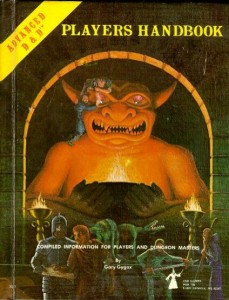 Inspired by the Friday and Saturday night shift running of the Tower of Gygax at GENCON 2009, I have begun to delve deeper into 1st Edition Advanced Dungeons and Dragons, and have been reminded of why I liked this edition so much as a kid. I’m documenting pros and cons of this (just about) original edition at DnFnD.blogspot.com.
Inspired by the Friday and Saturday night shift running of the Tower of Gygax at GENCON 2009, I have begun to delve deeper into 1st Edition Advanced Dungeons and Dragons, and have been reminded of why I liked this edition so much as a kid. I’m documenting pros and cons of this (just about) original edition at DnFnD.blogspot.com.
Follow along if you too want to reminisce.
Posted in news and tagged GenCon 2009, Tower of Gygax by Stephen Hilderbrand with no comments yet.
Arcane Runethrower
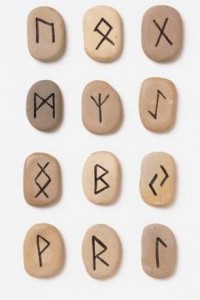 This prestige class is a natural fit for dwarven spellcasters steeped in their runic lore.
This prestige class is a natural fit for dwarven spellcasters steeped in their runic lore.
Arcane runethrowers have honed their stonecutting skill to be able to precisely chisel arcane runes into them. These runes replace most standard material components (excluding any with material cost and any others that the DM deems essential) when the spell is to be cast. Arcane runethrowers cast their runes and intone arcane words to bring about their spell effects.
NPC runethrowers usually lead lead solitary lives in towers and reclaimed caves. Some specialize in a particular set of runes, organizing into groups that trade their runes among themselves.
Hit Die: d6.
Requirements
To qualify to become an arcane runethrower, a character must fulfill the following criteria.
Alignment: Any
Skills: Spellcraft +6, Craft (Stonecutting) +6
Class Skills
Arcane runethrowers are intended to hone their Spellcraft and Knowledge: Arcana skills while keeping their tools and Stonecarving skills sharp.
Class Features
Arcane runethrowers gain the ability to cast spells at the same rate as sorcerers, and can elect to use their dexterity bonuses the way sorcerers use intelligence. They gain access to all the spells up to their arcane runethrower level plus any levels of spellcasting they have acquired through other classes. In addition, the following skills are are available: Concentration, Knowledge: Arcana, Knowledge: Dungeoneering, Spellcraft, Stonecarving, and Use Magic Device.
Arcane Skill Bonus: For every 10 points (ranks + ability modifier + misc modifier) in Stonecarving, arcane runethrowers cast spells at an additional level.
Posted in Uncategorized and tagged prestige class by Stephen Hilderbrand with no comments yet.
Initiative Around the Table
One variant that I have seen work well in multiple sessions is having whoever wins the initiative start the round, and have play proceed around the table from there at the discretion of the first player. This makes it easier to know who moves next, and players can stay close to the action until their turn is up before grabbing a snack or using the restroom.
This can really keep the action moving, but may upset players who want to go next. Use at your own risk.
Posted in Variant Rules by Stephen Hilderbrand with no comments yet.
Vampyric Runeblade
This black blade’s length is engraved with mystical runes that glow evily when it draws blood.
Level 20 +4 – 125,000 gold
Level 25 +5 – 625,000 gold
Level 30 +6 – 3,125,000 gold
Weapon: Heavy Blade, Light Blade
Enhancement: Attack rolls and damage rolls
Critical: +1d10 damage per plus
Power (daily): when you kill a nattural, fey or immortal target with this weapon you may spend a healing surge.
Posted in Uncategorized and tagged equipment: magic weapon by Adam A. Thompson with no comments yet.
